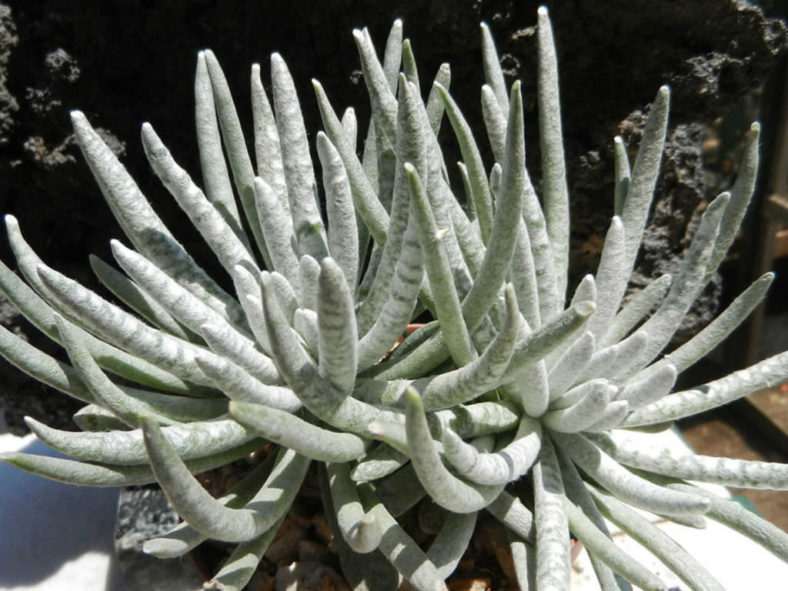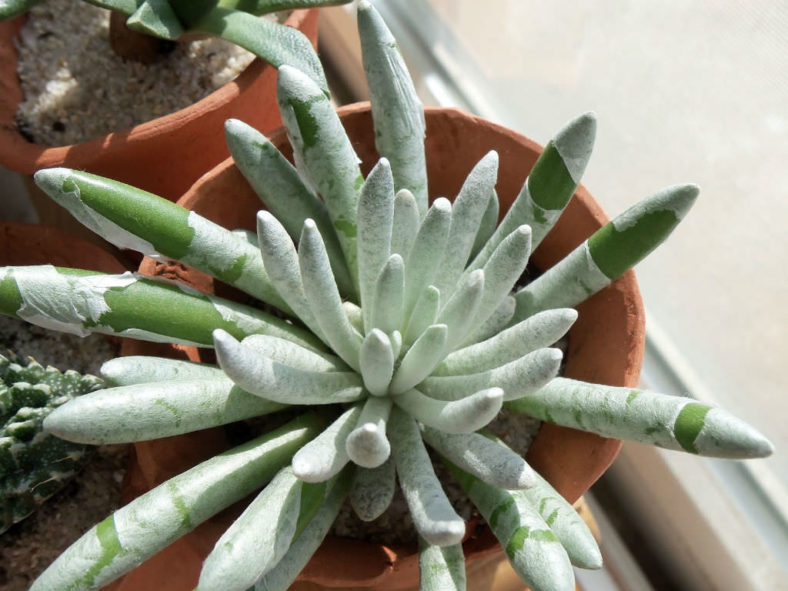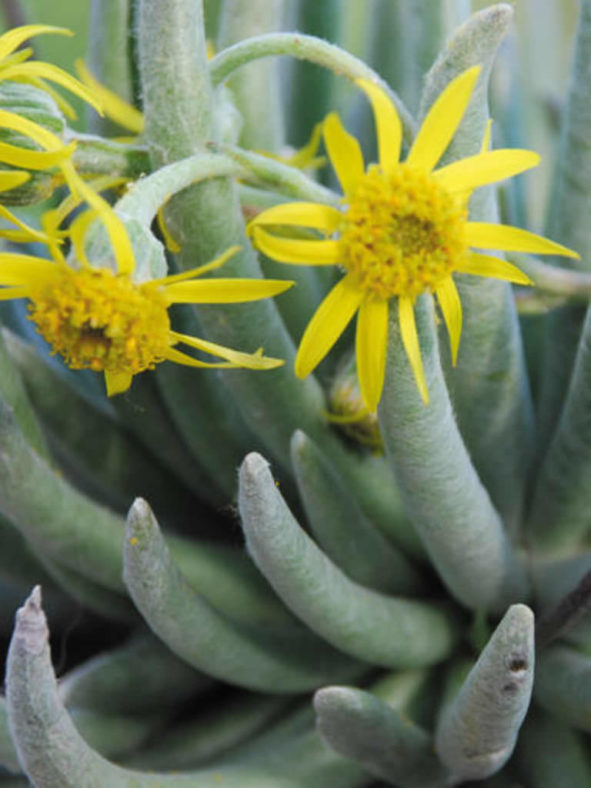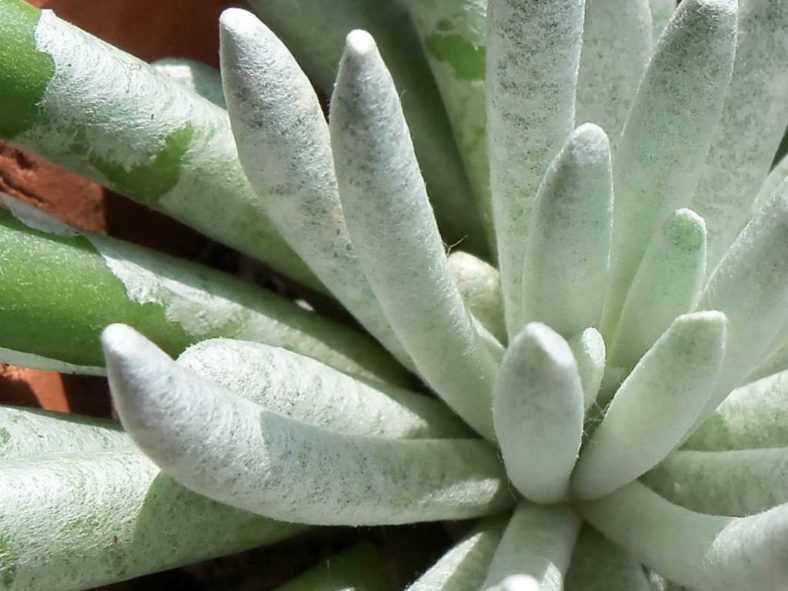Scientific Name
Caputia scaposa (DC.) B.Nord. & Pelser
Common Name(s)
Woolly Senecio
Synonym(s)
Cacalia tomentosa, Caputia scaposa var. scaposa, Senecio calamifolius, Senecio scaposus, Senecio scaposus var. scaposus
Scientific Classification
Family: Asteraceae
Subfamily: Asteroideae
Tribe: Senecioneae
Genus: Caputia
Origin
Caputia scaposa is native to South Africa. It occurs from Badspoort in Klein Karoo in Western Cape to Great Kei River in Eastern Cape, growing on sandstone ledges of sheer cliffs or rocky hills mainly in quartzitic, sandstone-derived soils.
Description
Caputia scaposa, formerly known as Senecio scaposus, is a small, nearly stemless succulent that forms tight rosettes of fleshy, bright green leaves with silvery-white woolly covering. It grows up to 12 inches (30 cm) tall. Leaves are upright, bean-like, and up to 4 inches (10 cm) long.
The showy flower heads are yellow, daisy-like, up to 1.4 inches (3.5 cm) in diameter, and appear on branched, up to 18 inches (45 cm) long stalks in summer.

Hardiness
USDA hardiness zones 9b to 11b: from 25 °F (−3.9 °C) to 50 °F (+10 °C).
How to Grow and Care
Established Senecios are extremely drought tolerant. They need some water during the summer but do not leave the soil wet for prolonged periods. Allow the soil to dry out between waterings in winter when they are somewhat dormant. Since they are growing in sandy soil, nutrients need to be replenished. Fertilize annually, but lightly. Too much fertilizer will cause a lot of leggy growth.
Taller varieties can get floppy. You can prune them back to where the stem is firm in early spring. You can even root the cuttings.
Plants can be divided or repotted in early spring. If you are growing them in containers, they enjoy spending the summer outdoors. Wait until there is no danger of frost and move them back indoors in the fall.
Senecio can be grown from either seed or cuttings. Seeds prefer warm temperatures and constant moisture to germinate. Cuttings are easier and faster. Cut during the growing season, from early spring to fall. Root in sandy soil, in containers.
Learn more at How to Grow and Care for Senecio.
Varieties
Links
- Back to genus Caputia
- Succupedia: Browse succulents by Scientific Name, Common Name, Genus, Family, USDA Hardiness Zone, Origin, or cacti by Genus
Photo Gallery
Click on a photo to see a larger version.



